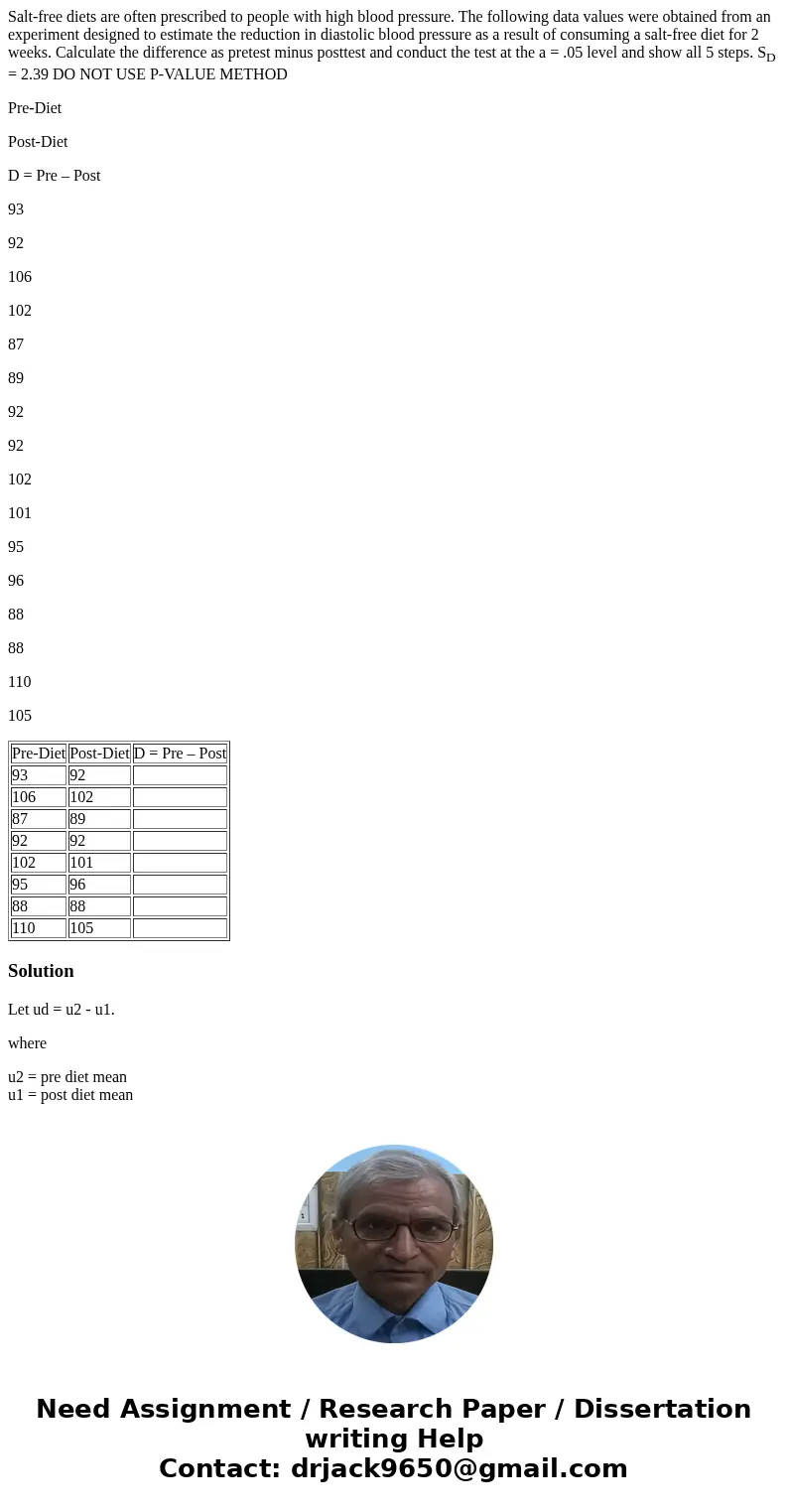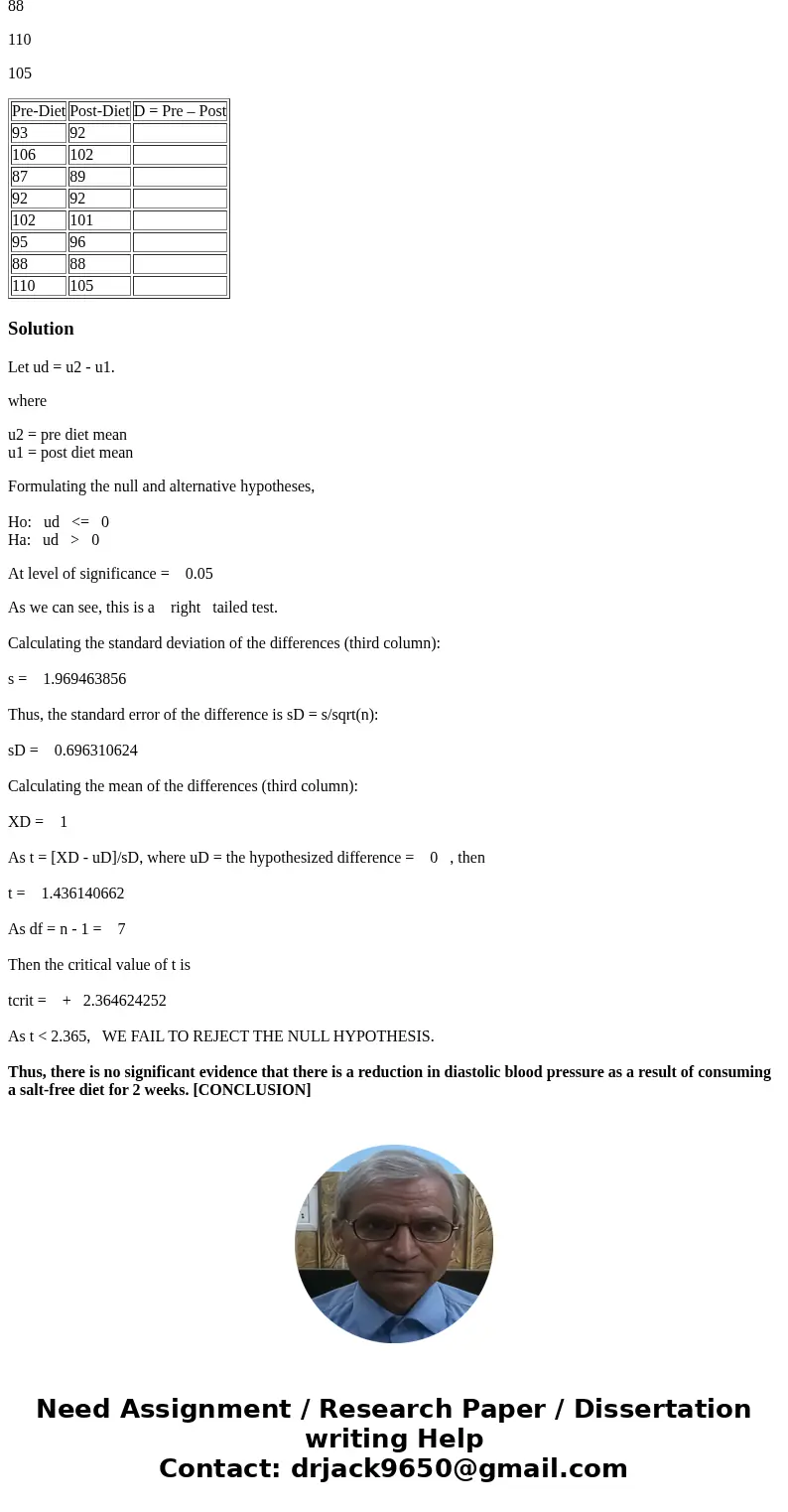Saltfree diets are often prescribed to people with high bloo
Salt-free diets are often prescribed to people with high blood pressure. The following data values were obtained from an experiment designed to estimate the reduction in diastolic blood pressure as a result of consuming a salt-free diet for 2 weeks. Calculate the difference as pretest minus posttest and conduct the test at the a = .05 level and show all 5 steps. SD = 2.39 DO NOT USE P-VALUE METHOD
Pre-Diet
Post-Diet
D = Pre – Post
93
92
106
102
87
89
92
92
102
101
95
96
88
88
110
105
| Pre-Diet | Post-Diet | D = Pre – Post |
| 93 | 92 | |
| 106 | 102 | |
| 87 | 89 | |
| 92 | 92 | |
| 102 | 101 | |
| 95 | 96 | |
| 88 | 88 | |
| 110 | 105 |
Solution
Let ud = u2 - u1.
where
u2 = pre diet mean
u1 = post diet mean
Formulating the null and alternative hypotheses,
Ho: ud <= 0
Ha: ud > 0
At level of significance = 0.05
As we can see, this is a right tailed test.
Calculating the standard deviation of the differences (third column):
s = 1.969463856
Thus, the standard error of the difference is sD = s/sqrt(n):
sD = 0.696310624
Calculating the mean of the differences (third column):
XD = 1
As t = [XD - uD]/sD, where uD = the hypothesized difference = 0 , then
t = 1.436140662
As df = n - 1 = 7
Then the critical value of t is
tcrit = + 2.364624252
As t < 2.365, WE FAIL TO REJECT THE NULL HYPOTHESIS.
Thus, there is no significant evidence that there is a reduction in diastolic blood pressure as a result of consuming a salt-free diet for 2 weeks. [CONCLUSION]


 Homework Sourse
Homework Sourse